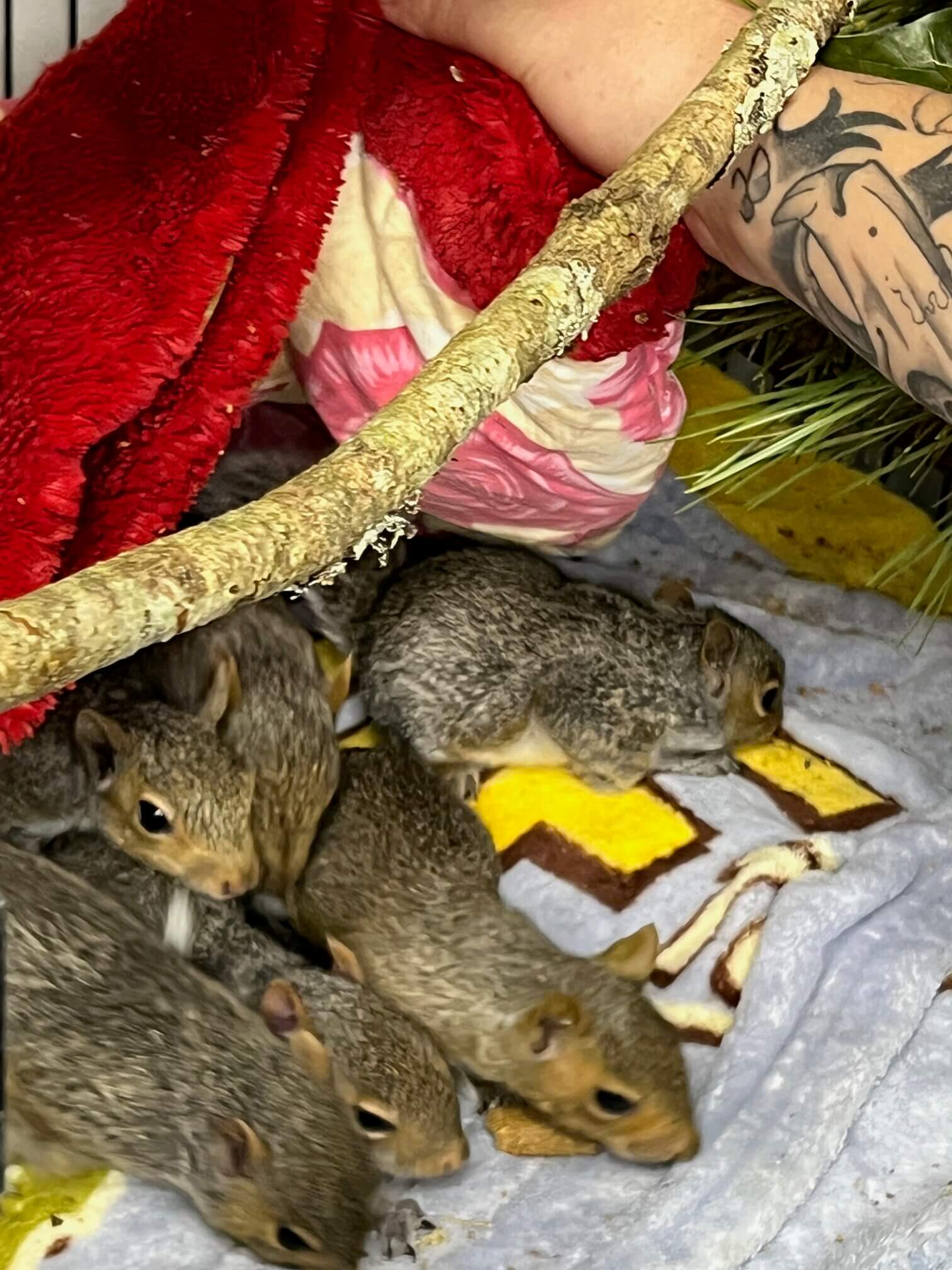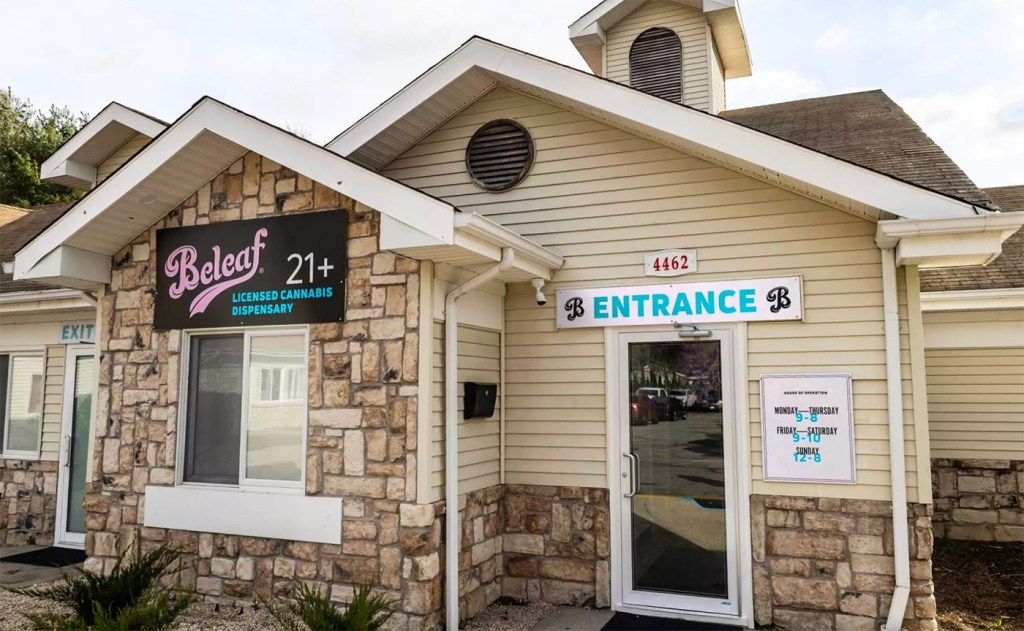Evelyn Alexander Wildlife Rescue Center Saves Baby Squirrels Wounded from Deforestation

As the only wildlife animal hospital on Eastern Long Island with over 42 squirrels in their care, the Evelyn Alexander Wildlife Rescue Center is working double time to fix a local, growing problem this fall: deforestation.
This dedicated organization is helping to reduce the threatening impact of humans on native wildlife species. In early fall, people cut down trees for various reasons — but it’s not the reasons that are important; it’s the timing. Squirrels usually have two litters: one litter in spring and another in fall, and the babies, on average, stay in the nest for a couple months. This means that baby squirrels are residing in the very trees that locals and companies are cutting down every fall, leaving at least hundreds of baby squirrels orphaned and injured.
This is where the Evelyn Alexander Wildlife Rescue Center provides expert care, rehabilitation and medical assistance. Relying on this refuge, baby Eastern grey squirrels are brought in severely injured due to falling from their destroyed nest or becoming separated from their mother.
Despite the tragedy that plagues these squirrels every fall, the Wildlife Rescue Center is determined to nurture, rehabilitate and then release these squirrels back into the wild.
Rehabilitating these squirrels is hard work, yet the trained veterinary professionals take all the right precautions to raise and nurse the squirrels back to a sustainable condition. The squirrels’ wounds vary from broken bones, which can be very detrimental to developing juveniles, or various injuries caused by dogs and cats that find the fallen babies. One of the juvenile squirrels, found with a completely broken arm, is now in a very successful recovery, with movement to her fingertips returning.
The wildlife employees used a splint to allow the arm to heal without the risk of intense movement from the active juvenile, and use nerve medications to help the process proceed more easily with reduced pain. For external injuries on the squirrels, caused by dogs, cats, maggots or wounds when the squirrels fall from the broken nests, the Wildlife Center prescribes antibiotics and anti-inflammatory medications.
While many of the baby squirrels need these drugs, the Wildlife Center treats with medication very carefully, as too much may inhibit the growing juveniles or cause other problems to erupt. For the orphaned and recovering squirrels, fluids and formula are used to nurse the babies into their juvenile stage so that they receive all their vital nutrients.
The employees use Sharpie pens to make a colored dot, which is completely harmless, on each squirrel’s ear for identification so that they can ensure each squirrel is receiving the right medication.

During the juvenile and later stages of their development, the Wildlife Center feeds them rodent block, a kibble that contains all the proper vitamins and nutrients the juveniles require, along with a variety of carrots, lettuce, broccoli and other vegetables. These squirrels are rehabilitated and cared for until they reach a suitable age where they can survive in the wild on their own.
The Eastern grey squirrels, like all squirrel species, are extremely social creatures. The refuge keeps all the rehabilitating squirrels together in groups for this very reason. Especially when they are young, it is very important for baby and juvenile squirrels to learn to socialize and understand the mannerisms and cues that squirrels have to survive in the wild. In both the wild and in the refuge, squirrels communicate with each other constantly, which is why it is very important for them to learn behaviors from one another in a safe space.
The Wildlife Center, in addition to socialization, keeps the squirrels together for imprinting reasons. Baby and juvenile squirrels are able to imprint on humans, and if they are not among their species and imprint on a human instead, they won’t be able to learn the necessary skills to survive in the wild. All these precautions are taken so that the squirrels’ releases are performed as smoothly as possible.
The Wildlife Center releases the squirrels specifically in large, wooded backyards. Many of the employees have backyards that connect into wooded, protected areas, which is the ideal location for a squirrel release. Wooded areas, far from busy roads, are the most desirable for squirrels’ reintroduction back into the wild. This is a long process, as many of the squirrels need assistance with food supplementation while they acclimate into their surroundings and learn to hunt for food.
Volunteers and staff will feed the squirrels in their backyards until the squirrels are comfortable enough where they don’t need to come back nor rely on this assistance.
As Eastern Long Island’s only animal hospital, the Evelyn Alexander Wildlife Rescue Center treats and rehabilitates nearly 200 different species of native wildlife. These include groundhogs, racoons, foxes, rabbits, possums and many other mammals; and eagles, owls, pigeons, swans, geese, ducks, seagulls and various other avian species, both native and migratory.
The staff, with assistance from dedicated volunteers, ensures each animal is receiving the best care while recovering.
For over 20 years, the refuge has been protecting, rescuing, rehabilitating and releasing Suffolk County wildlife back into nature. The Wildlife Center recommends not cutting down trees until November to reduce the problems discussed in this article.
The Evelyn Alexander Wildlife Center, a 501(c)(3) not-for-profit organization, depends on donations from the local community, businesses and visitors, to continue rescuing and rehabilitating Long Island’s wildlife year-round. Dedicated to reducing the threatening impact of humans on wildlife, the refuge can only function with your help.
The Evelyn Alexander Wildlife Center is located at 228 W. Montauk Highway in Hampton Bays. It can be reached at 631-728-4200. For animal medical emergencies, call 631-728-4453 (WILD).



